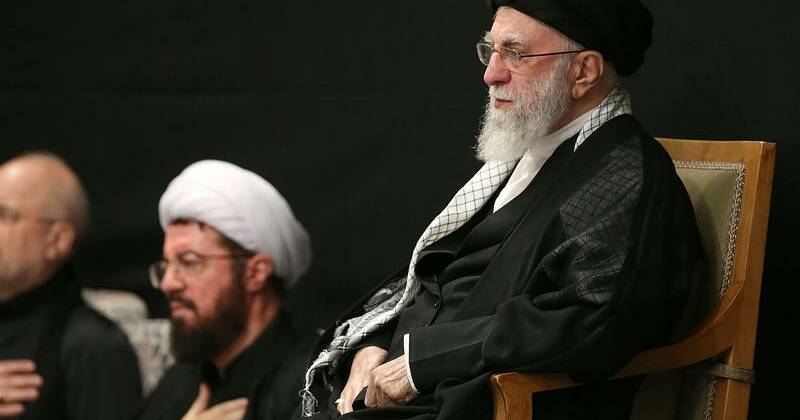
Iran’s Supreme Leader Ayatollah Ali Khamenei made a rare public appearance at a religious event, marking his first since the onset of a 12-day air conflict with Israel. The video, broadcast by state television, dispelled rumors about his whereabouts after reports suggested he had been in a “secure location” during the hostilities. The conflict, which resulted in significant casualties and damage, saw the deaths of top Iranian commanders and nuclear scientists.
The footage showed Khamenei attending a ceremony for Ashura, the most sacred day in the Shi’ite Muslim calendar. The event was held in a hall frequently used for government functions, with dozens of attendees chanting as Khamenei entered. His last public appearance was on June 11, during a meeting with members of parliament, just two days before Israel began its military campaign against Iran.
Khamenei’s Absence and Symbolic Importance
For the duration of the conflict, Khamenei’s absence from public view fueled speculation and concern. In a nation where the Supreme Leader’s presence carries immense symbolic weight, his disappearance was particularly notable. During the conflict, he communicated through pre-recorded messages, avoiding live appearances due to apparent security concerns.
The absence of Khamenei was further underscored by threats from Israeli Defence Minister Israel Katz, who openly targeted him during the conflict. The war has seen over 900 Iranian casualties and thousands injured, with extensive damage reported to its nuclear infrastructure. Iran has denied access to these sites for United Nations nuclear inspectors, adding to international tensions.
Escalation and Retaliation
The conflict began on June 13, with Israel launching a series of attacks targeting Iran’s nuclear facilities, defense systems, and high-ranking officials. In response, Iran fired more than 550 ballistic missiles at Israel. While most were intercepted, those that penetrated the defenses caused significant damage and resulted in 28 Israeli deaths.
“Iranian authorities have acknowledged the deaths of more than 900 people in the air war with Israel, as well as thousands of injured.”
This exchange of hostilities marks one of the most intense periods of confrontation between the two nations in recent years, highlighting the fragile state of regional security and the potential for further escalation.
Historical Context and Future Implications
The current conflict is reminiscent of previous tensions between Iran and Israel, which have frequently flared due to Iran’s nuclear ambitions and Israel’s security concerns. Historically, both nations have engaged in proxy battles and cyber warfare, but direct military confrontations have been relatively rare.
Experts suggest that the recent hostilities could lead to a recalibration of strategies by both countries. Iran’s decision to restrict access to its nuclear sites could exacerbate tensions with the international community, especially with the United Nations and countries invested in nuclear non-proliferation.
As the dust settles, the international community watches closely for any signs of de-escalation or further conflict. The situation remains precarious, with potential implications for regional stability and global diplomatic relations.
Moving forward, the focus will likely be on diplomatic efforts to address the underlying issues and prevent further escalation. The role of international mediators and organizations will be crucial in facilitating dialogue and ensuring compliance with international norms.






